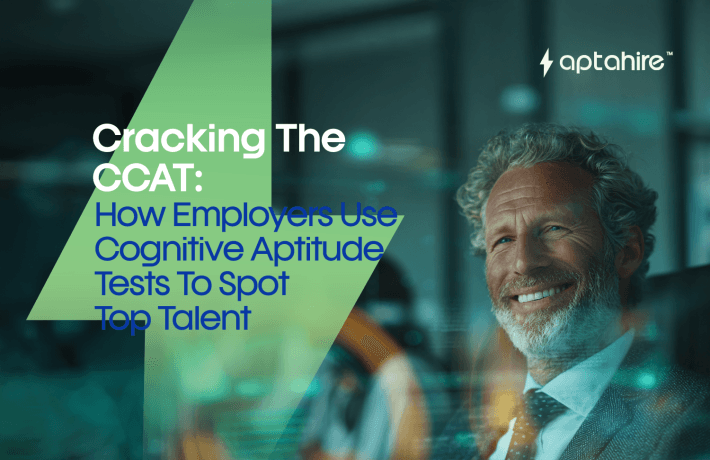Multitasking Detection with Hidden Markov Models and LSTM Networks: Keeping Virtual Interviews Honest

Let’s be honest. We’ve all done it, browsed another tab during a meeting, replied to a text while on a Zoom call, or maybe even Googled answers during an online assessment. But when it comes to virtual interviews, multitasking isn’t just rude, it’s cheating.
In a world where remote hiring is the new normal, recruiters need to know:
Is this candidate genuinely engaged, or are they getting help from ChatGPT, a friend in the room, or a second screen?
This is where AI-powered multitasking detection, especially using Hidden Markov Models (HMMs) and Long Short-Term Memory (LSTM) networks, steps in to save the day, quietly working behind the scenes to protect interview integrity.
Let’s break this down, one insight at a time.
The Psychology of Multitasking in Interviews
Multitasking during interviews often happens in three ways:
- Reading from a pre-written script
- Googling answers or using AI tools
- Getting help from someone off-camera
You might think candidates can hide it, but the truth is, our behaviors always leave a digital trace.
Even micro-behaviors like eye movements, typing patterns, or unusual silence can raise flags.
So How Do We Detect It? Enter HMMs and LSTMs
Let’s get a bit nerdy (in a fun way):
Hidden Markov Models (HMMs)
Think of HMMs as a way to guess what someone is doing based on observable patterns.
They model “hidden states” (like reading a script, browsing another tab, or waiting for help) based on visible actions (like lack of eye contact, delayed responses, or sudden gaze shifts).
In interviews, HMMs help systems predict when a candidate might be multitasking, even if we can’t see it directly.
Example: If a candidate consistently delays their answers by 4–5 seconds after a question, HMMs might infer that they’re switching tabs or seeking external help.
LSTM Networks (Long Short-Term Memory)
Now add LSTMs, deep learning models that remember behavior patterns over time.
LSTMs analyze sequences like:
- Eye gaze over a minute
- Typing rhythm and hesitations
- Speech-to-silence ratios
They’re great at detecting time-based irregularities. If a candidate is focused for 2 minutes, then suddenly starts showing erratic gaze and delayed responses, LSTMs can recognize this shift and raise a flag.
Together, HMMs + LSTMs create a powerful combo:
Pattern prediction + Time-aware context = Spot-on multitasking detection
Real-World Impact: Case Studies & Stats
Let’s talk results. Because we know theory alone isn’t convincing, you want proof.
Case Study 1: Aptahire Platform
After integrating LSTM-based behavioral analysis:
- Multitasking detection accuracy rose by 47%
- The platform flagged 1 in 6 interviews for attention inconsistencies
- Recruiters saw a 35% reduction in post-hire attrition, thanks to better interview filtering
Case Study 2: Tech University Proctoring
An Indian tech university piloted multitasking detection for online coding assessments:
- HMMs identified tab-switching behaviors with 91% accuracy
- Over 120 cases of real-time assistance were caught in just 3 weeks
Industry Insight
According to a 2024 LinkedIn Hiring Report:
“Over 68% of recruiters believe that multitasking during virtual interviews leads to mis-hires and talent mismatches.”
Clearly, it’s not just about who knows the answers, it’s about who can stay focused and honest.
Why This Matters (And Why You Should Care)
In the traditional world, you’d notice if someone brought notes to an in-person interview or whispered with someone off-screen. But in virtual interviews? That’s much harder to catch.
AI multitasking detection closes that gap.
It brings fairness to the table. Every candidate, whether they’re sitting in Silicon Valley or a small town in India, is evaluated by the same behavioral yardstick.
And for hiring managers? It removes guesswork. No more “gut feel.” Just clean, intelligent data.
But Wait, Is This Ethical?
Here’s a valid concern: Are we over-monitoring candidates?
The answer: Not if it’s transparent and consensual.
Good platforms always:
- Inform candidates about behavioral monitoring
- Ensure data is encrypted and anonymized
- Only use AI during active interview windows
- Allow humans (not machines) to make final hiring decisions
It’s not about catching people out. It’s about ensuring integrity in a high-stakes process.
The Tech Behind the Scenes (For the Curious Minds)
Let’s geek out a bit.
- HMMs use probabilistic modeling, like:
If eye contact breaks + audio lag = high chance of distraction
- LSTMs analyze time-series data:
Sudden shift in tone or repeated gaze drifts = attention shift detected
Data sources include:
- Eye-tracking (via webcam)
- Mouse and keyboard usage patterns
- Microphone input lag
- Silence vs speech intervals
- On-screen cursor movements
Platforms like HireVue, and Aptahire use custom neural nets trained on hundreds of thousands of interviews, so they get better over time.
Bonus: How Recruiters Can Use This Data
It’s not about rejecting candidates based on one flag. AI can give you:
- Behavioral heatmaps showing attention consistency
- Engagement scores that complement technical assessment
- Contextual alerts (e.g., “Candidate gaze diverted 4x during technical question”)
Used wisely, this helps:
- Filter red flags
- Shortlist genuine applicants
- Reduce onboarding risk
What’s Next in Multitasking Detection?
This tech is evolving fast. Coming soon:
- Real-time nudging: If a candidate is distracted, the AI can gently remind them to stay focused.
- Emotion-aware AI: Models that distinguish stress from cheating (so nervous candidates aren’t penalized).
- Behavioral baselines: Compare each candidate to their own starting behavior for more fairness.
Final Thoughts: Keeping It Honest, Keeping It Human
Here’s the bottom line:
Multitasking detection isn’t about building a “gotcha” system.
It’s about leveling the playing field. When everyone knows that the process is fair, transparent, and protected, the right people shine through. HMMs and LSTMs might sound complex, but at their core, they’re tools that help hiring stay honest, human, and focused. Because in the end, it’s not just about who shows up on screen.
It’s about who shows up with integrity.
1. What are LSTM networks?
LSTM stands for Long Short-Term Memory, a special kind of recurrent neural network (RNN) designed to understand sequences and remember important information over time.
Think of LSTM networks as neural nets with a “memory chip.” They’re really good at spotting patterns that happen over time, like how someone types, speaks, or moves their eyes in a video. That’s why they’re widely used in applications like language modeling, speech recognition, and even multitasking detection in interviews.
2. What is the LSTM algorithm in deep learning?
The LSTM algorithm is a sequence-processing model that allows neural networks to remember or forget specific information by using gates, little logic units that control the flow of information.
At each time step, the LSTM:
Takes in a new input (like a word, image frame, or behavior signal),
Decides what to remember, update, and forget,
Then sends a cleaned-up version of the information to the next layer.
This makes LSTMs excellent for problems where context from earlier steps affects later outputs, like in text generation or behavioral prediction in video interviews.
3. What is the principle of LSTM?
The core principle of LSTM is selective memory, holding onto the important parts of a sequence while discarding the rest. This is done through three key steps:
- Remembering important signals
- Forgetting irrelevant ones
- Updating memory based on new input
This helps LSTM networks tackle the “vanishing gradient problem” in traditional RNNs, where the model would forget earlier parts of a sequence when trained on long data streams.
4. What are the 4 gates of LSTM?
Actually, LSTM traditionally has 3 main gates, but a variant architecture may include a 4th component. Here’s how the standard 3 work:
Forget Gate (f): Decides what information to discard from the cell state.
Input Gate (i): Decides what new information to store.
Output Gate (o): Determines what part of the memory gets passed to the next step.
And the 4th component, often referred to (but not technically a “gate”) is:
4. Cell State (C): The internal memory unit that carries useful information across time steps.
These gates work together to help the model retain meaningful patterns and ignore noise.
5. What is LSTM best used for?
LSTM is best used in scenarios where data is sequential and context matters. Some common applications include:
- Natural Language Processing (NLP): Text prediction, translation, sentiment analysis
- Speech Recognition: Transcribing spoken words
- Video Analysis: Detecting activity patterns or behaviors
- Time-Series Forecasting: Stock prices, weather predictions
- Multitasking Detection: Analyzing interviewee behavior over time for distraction or cheating signals
Its strength lies in understanding “what came before” to make better predictions now.
6. What is a Markov model used for?
A Markov model is used to predict the likelihood of a sequence of events, assuming the next event depends only on the current state, not the entire history.
It’s incredibly useful for modeling uncertain, probabilistic systems, like:
- User behavior in apps or games
- Weather patterns
- DNA sequences
Multitasking behavior in interviews (e.g., is the candidate currently focused or distracted?)
In AI hiring systems, Hidden Markov Models (HMMs) are often used to infer unseen states (like “reading a script”) based on visible behavior patterns.
7. What is a simple example of a Markov model?
Let’s say you’re predicting tomorrow’s weather, and your model has two states:
Sunny or Rainy.
If it’s sunny today, the model might say there’s:
- 80% chance it stays sunny
- 20% chance it rains
This is a first-order Markov model, tomorrow depends only on today, not what happened 3 days ago.
It’s that simple, a powerful model that thrives on probabilities and transitions.
8. What are Markov state models?
Markov state models (MSMs) are a way of simplifying complex systems into discrete “states” and calculating the probability of transitioning from one state to another.
In essence, they help you map out:
- The possible states (like “Focused”, “Distracted”, “Idle”)
- The transitions between them (and how likely they are)
- They’re especially useful in areas like:
- Molecular dynamics
- Behavior analysis
Virtual proctoring systems, where each user behavior is modeled as a transition between observable states.
9. What is the 4-state Markov model?
A 4-state Markov model is a specific case of a Markov chain with four distinct states. For instance, in virtual interviews, the states might be:
- Focused
- Distracted
- Idle
- Assisted
Each of these states has transition probabilities, say, there’s a 30% chance a focused candidate becomes distracted, or a 10% chance they shift to being assisted.
By running this model over time, AI can identify suspicious patterns, like candidates moving between “Focused” and “Assisted” states more often than usual.



